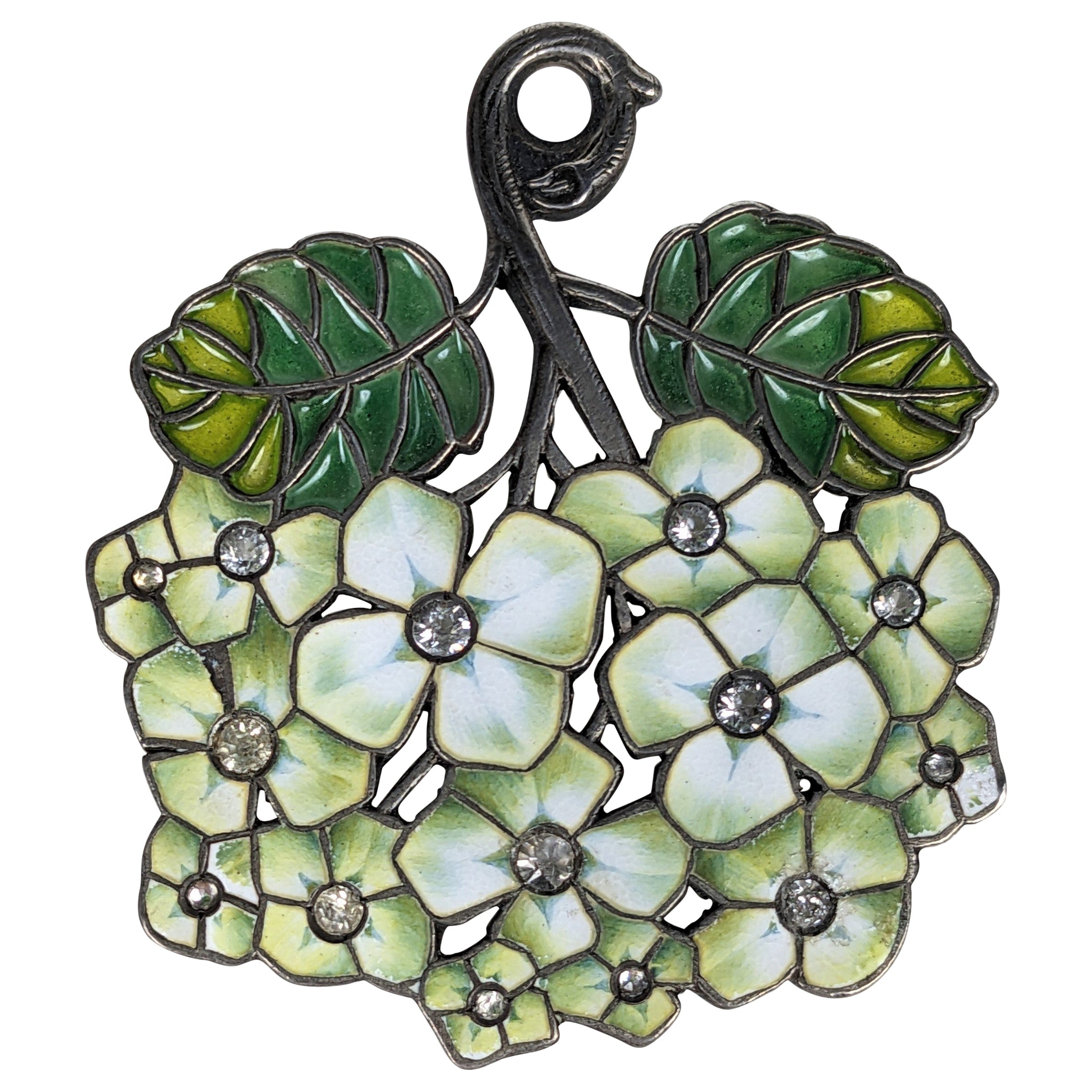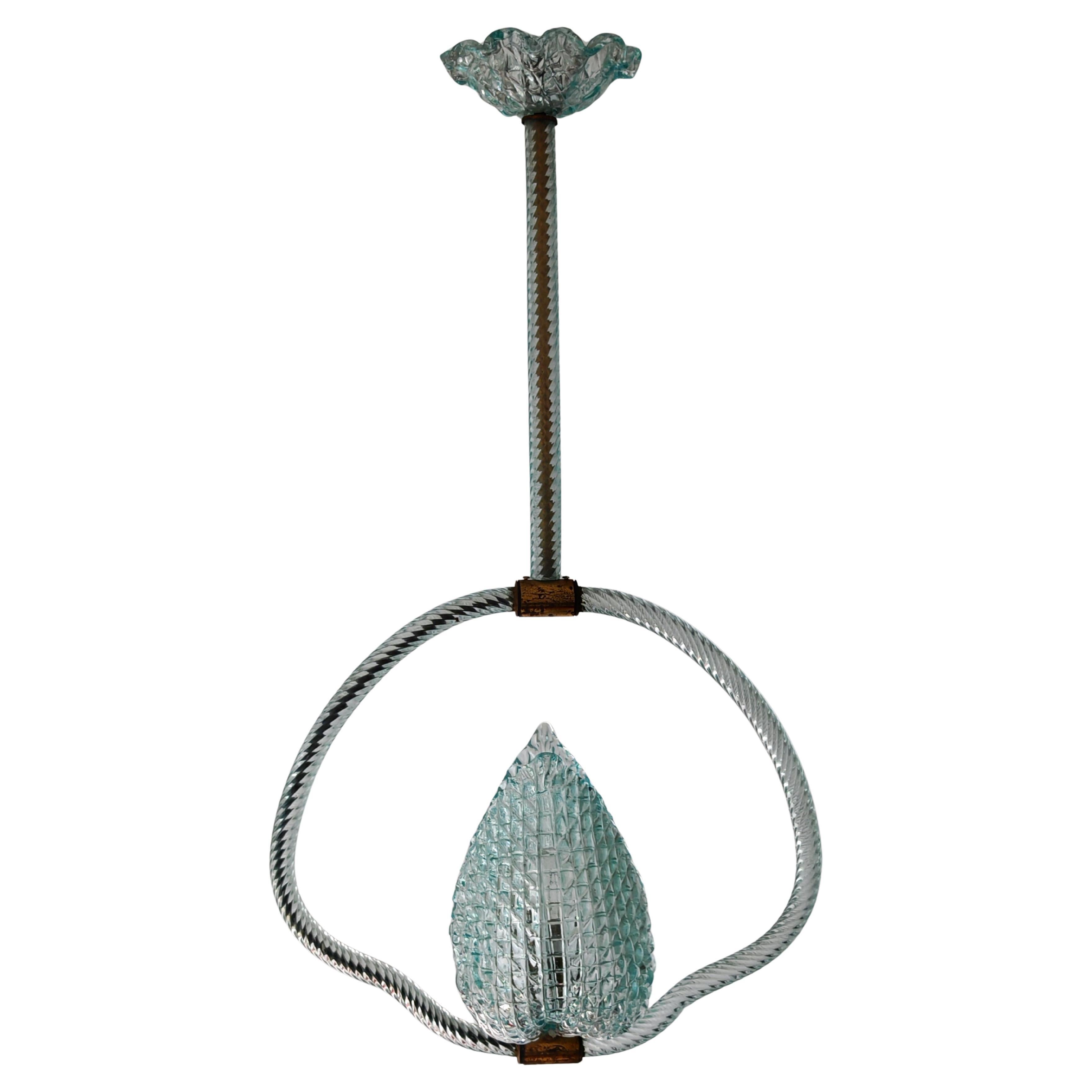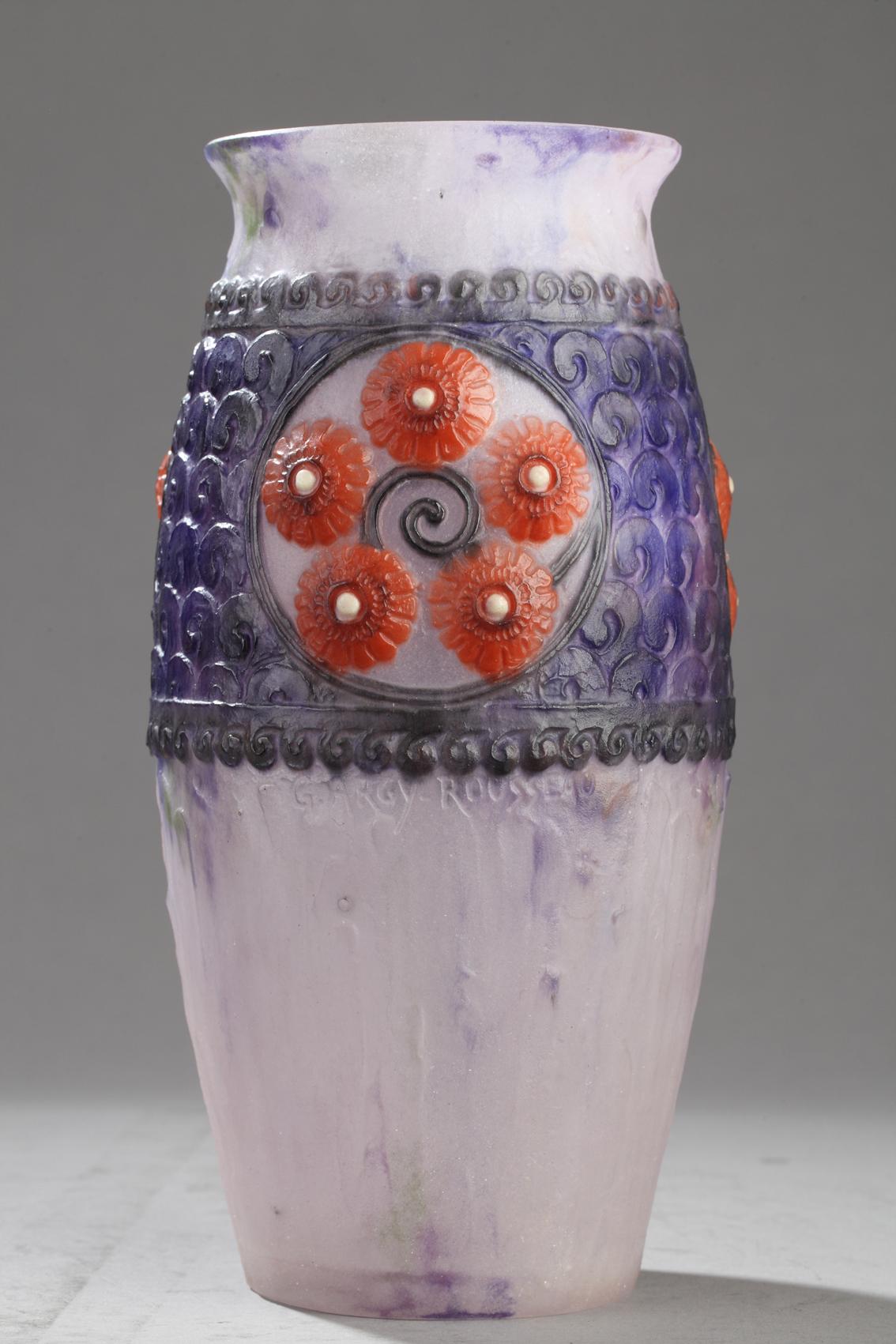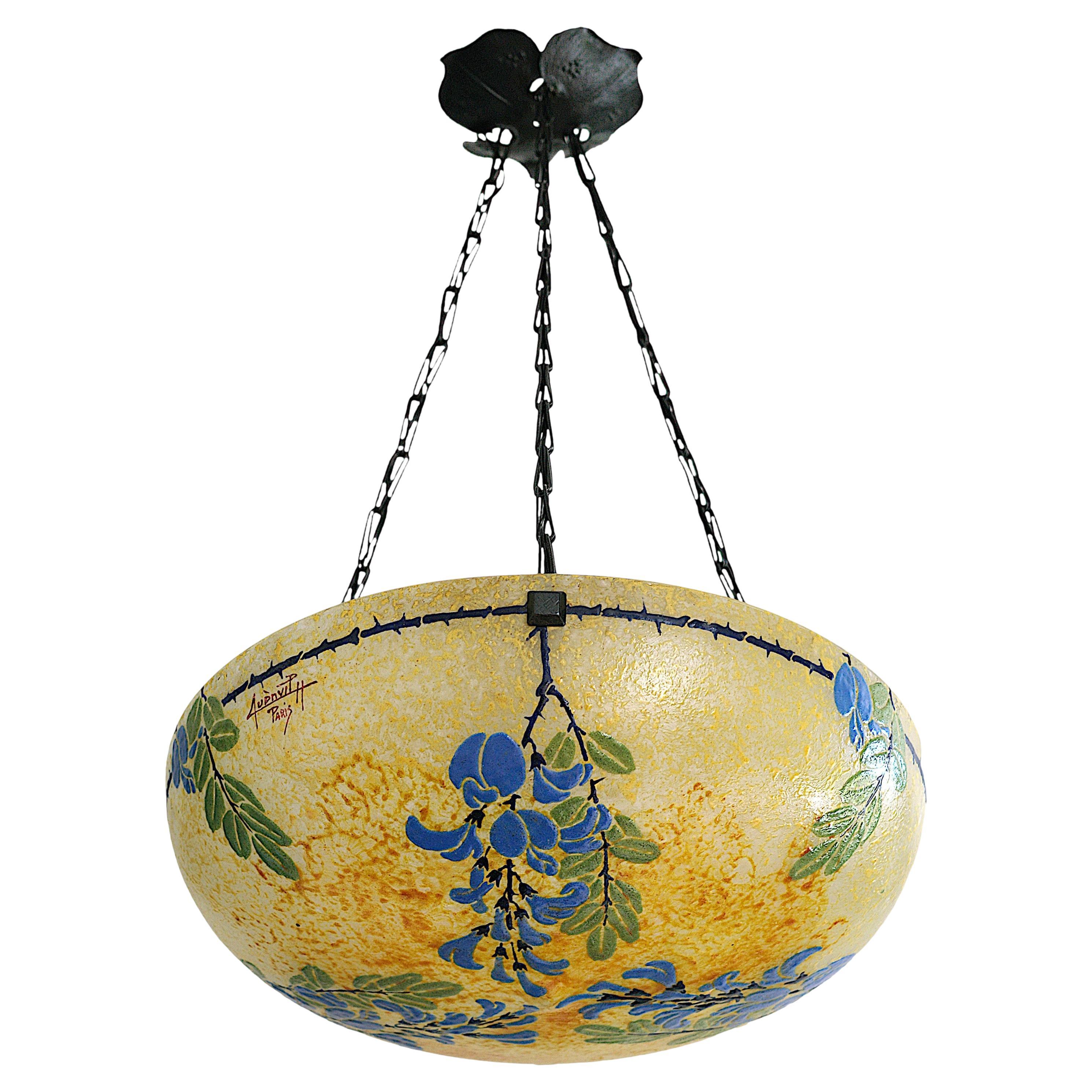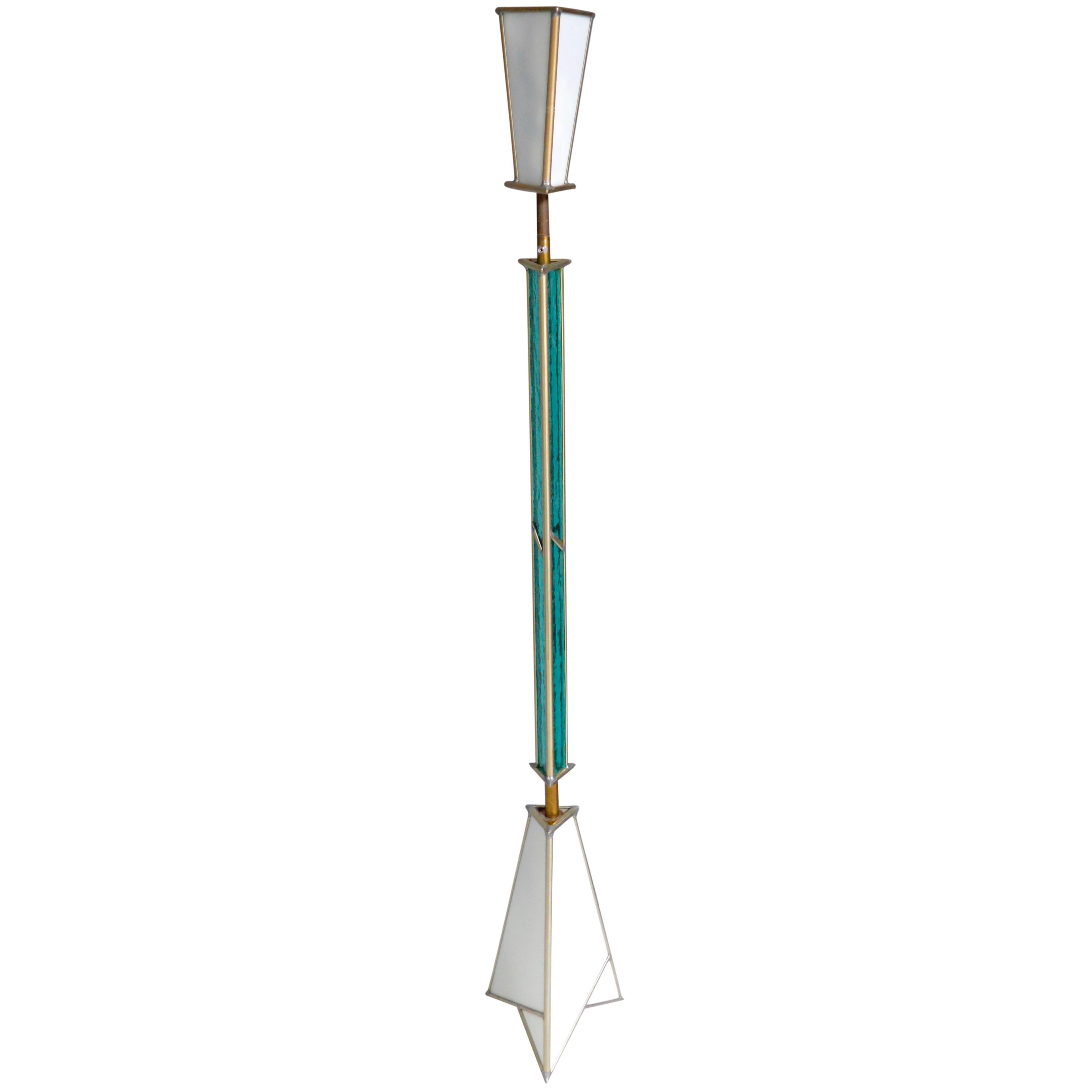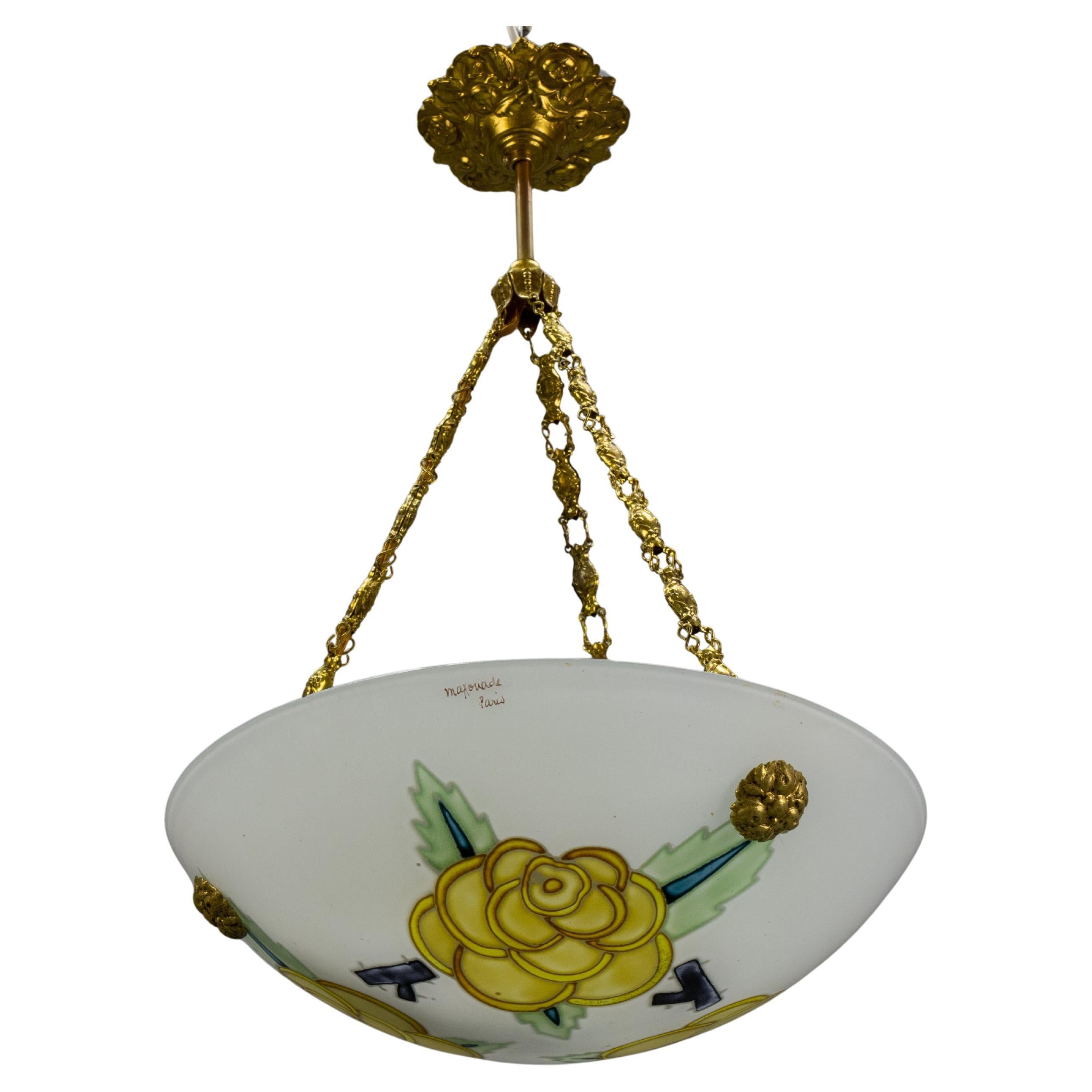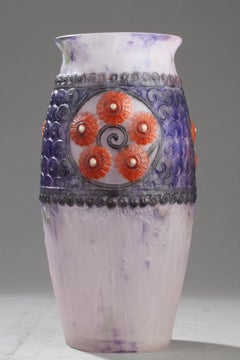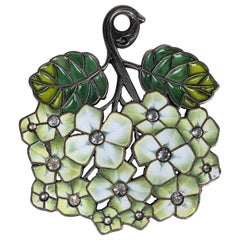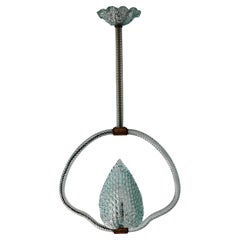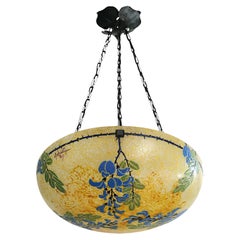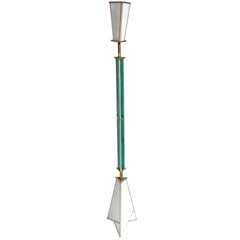Items Similar to Pendant "Hydrangea"
Want more images or videos?
Request additional images or videos from the seller
1 of 6
Gabriel Argy-RousseauPendant "Hydrangea"circa 1921
circa 1921
$1,437.40
£1,074.85
€1,200
CA$1,980.38
A$2,159.89
CHF 1,144.16
MX$25,893.97
NOK 14,571.54
SEK 13,324.59
DKK 9,144.48
About the Item
Pendant "Hydrangea"
by Gabriel ARGY-ROUSSEAU (1885-1953)
Beautiful glass paste medallion,
patterned with turquoise hydrangea flowers.
Designed as a pendant with three small holes for cords.
Signed on the edge " G. A-R "
Very good condition
France
circa 1921
diameter 6,5 cm
Model presented in 1921, reproduced in "Les pâtes de verre, catalogue raisonné G. Argy-Rousseau", Les éditions de l'amateur, p.187.
Biography :
Joseph Gabriel Rousseau called Gabriel Argy-Rousseau (1885-1953) was a French sculptor, ceramist and glassmaker who contributed to the rediscovery of cameo glass as a major glass art of the early twentieth century. If the technique of cameo glass dates back to ancient times, it fell into oblivion for a long time. In the last quarter of the nineteenth century, Henri Cros and a handful of artists, often ceramists of the Art Nouveau movement, such as François Décorchemont or Georges Despret, put it in the spotlight. The last of these precursors was Gabriel Argy-Rousseau. He was considered as the only glassmaker to have developed and used the complex process of cameo glass, the other glassmakers working with crystal paste.
Entering the Ceramics School of Sèvres, he discovered the cameo glass in the workshop of Henri Cros. Gabriel Argy-Rousseau began to produce between 1910 and 1920. His early works were influenced by Art Nouveau style plant motifs and animal themes. He began at the 1914 Salon of the French Artists in Paris. Between 1921 and 1931, established rue Simplon in Paris, he was a shareholder in the Argy-Rousseau cameo Glass Society. With many collaborators, he produced small very colorful Art Nouveau and Art Deco subjects, distributed in small series: pendants, vases, lamps and night lights and, from 1928, sculptures (statuettes or bas-reliefs) in collaboration with Marcel Bouraine. Unlike his fellow ceramicists, he remained belatedly faithful to the polychrome effects and floral motifs of Art Nouveau style. He developed shimmering colors (ruby red, amethyst, gray, deep blue ...) and textures with marbled effects. He invented new processes for the superficial coloring of the paste, by painting oxide powder before second firing at a low temperature. His works were in glass paste, the statuettes usually in crystal paste.
The glass creations of Gabriel Argy-Rousseau remain among the most typical and representative examples of Art Deco production. The production of the workshop ceased in 1931, but Argy-Rousseau continued to create pieces of crystal paste, because of the economic crisis, the opportunity to work the expensive process of the glass paste was no longer possible. He exhibited punctually, especially in 1934, glassware adorned with precious metals. His last exhibition took place a year before his death in 1952. He died forgotten, but left many works in the glass branch, now rediscovered.
Joseph Gabriel Rousseau called Gabriel Argy-Rousseau (1885-1953) was a French sculptor, ceramist and glassmaker who contributed to the rediscovery of cameo glass as a major glass art of the early twentieth century. If the technique of cameo glass dates back to ancient times, it fell into oblivion for a long time. In the last quarter of the nineteenth century, Henri Cros and a handful of artists, often ceramists of the Art Nouveau movement, such as François Décorchemont or Georges Despret, put it in the spotlight. The last of these precursors was Gabriel Argy-Rousseau. He was considered as the only glassmaker to have developed and used the complex process of cameo glass, the other glassmakers working with crystal paste. Entering the Ceramics School of Sèvres, he discovered the cameo glass in the workshop of Henri Cros. Gabriel Argy-Rousseau began to produce between 1910 and 1920. His early works were influenced by Art Nouveau style plant motifs and animal themes. He began at the 1914 Salon of the French Artists in Paris. Between 1921 and 1931, established rue Simplon in Paris, he was a shareholder in the Argy-Rousseau cameo Glass Society. With many collaborators, he produced small very colorful Art Nouveau and Art Deco subjects, distributed in small series: pendants, vases, lamps and night lights and, from 1928, sculptures (statuettes or bas-reliefs) in collaboration with Marcel Bouraine. Unlike his fellow ceramicists, he remained belatedly faithful to the polychrome effects and floral motifs of Art Nouveau style. He developed shimmering colors (ruby red, amethyst, gray, deep blue ...) and textures with marbled effects. He invented new processes for the superficial coloring of the paste, by painting oxide powder before second firing at a low temperature. His works were in glass paste, the statuettes usually in crystal paste. The glass creations of Gabriel Argy-Rousseau remain among the most typical and representative examples of Art Deco production. The production of the workshop ceased in 1931, but Argy-Rousseau continued to create pieces of crystal paste, because of the economic crisis, the opportunity to work the expensive process of the glass paste was no longer possible. He exhibited punctually, especially in 1934, glassware adorned with precious metals. His last exhibition took place a year before his death in 1952. He died forgotten, but left many works in the glass branch, now rediscovered.

About the Seller
5.0
Recognized Seller
These prestigious sellers are industry leaders and represent the highest echelon for item quality and design.
Established in 1992
1stDibs seller since 2023
11 sales on 1stDibs
Typical response time: 23 hours
- ShippingRetrieving quote...Shipping from: PARIS, France
- Return Policy
More From This Seller
View AllVase with Flowery medallions
Located in PARIS, FR
Vase known as "Flowery medallions"
Gabriel ARGY-ROUSSEAU (1885-1953)
Made in cameo glass (pâte de verre),
ornated with a wide violet-blue wave motif frieze,
adorned with three red-c...
Category
1920s Art Deco More Art
Materials
Glass
Ivy Vase
Located in PARIS, FR
Ivy Vase
by Ernest LEVEILLE (1841–1913)
Flat body shaped vase in green blown-molded glass,
with ivy decoration
Acid-etched decor in reserve for the leaves,
...
Category
Late 19th Century Art Nouveau More Art
Materials
Blown Glass
"Bellflowers" Vase
By Émile Gallé
Located in PARIS, FR
"Bellflowers" Vase
by Émile GALLE (1846-1904)
A very rare shell-shaped vase,
double-layered blown glass with powder and silver foil inclusions.
Wheel-carved cameo decoration ornate...
Category
Early 20th Century Art Nouveau More Art
Materials
Blown Glass
Vase with Clematis
By Émile Gallé
Located in PARIS, FR
Vase with Clematis
by Émile GALLE (1846-1904)
A baluster-shaped vase ornated with clematis.
Green, purple and opalescent multi-layered glass.
The fine floral decoration was made bo...
Category
Early 20th Century Art Nouveau More Art
Materials
Blown Glass
Important vase with Clematis
By Émile Gallé
Located in PARIS, FR
Important vase with Clematis
by Etablissements GALLE
A very important baluster shaped vase with a flared neck
Multilayer glass
decorated with acid-etched blue and brown Clematis
on...
Category
Early 20th Century Art Nouveau More Art
Materials
Glass
"Sagittarius" Wall light
Located in PARIS, FR
Louis MAJORELLE (Toul 1859 - Nancy 1926)
Augustin DAUM (1853 - 1909)
Antonin DAUM (1864 - 1930)
"Sagittarius" Wall light
Extremely rare "plant" wall lamp with two lights, in gilt b...
Category
Early 1900s Art Nouveau More Art
Materials
Blown Glass
You May Also Like
Art Nouveau Hydrangea Plique a Jour Pendant
Located in New York, NY
Art Nouveau Hydrangea Plique a Jour Pendant set in silver with hand painted hard enamel florals and plique a jour leaves. Realistically modeled silver branch with a enamel bloom belo...
Category
Antique Early 1900s German Art Nouveau Pendant Necklaces
Materials
Sterling Silver
Rare Mid Century Modern Blue Jewel Pendant by Barovier and Toso, Italy 1950s
By Barovier&Toso
Located in Beograd, RS
In this listing you will find a very rare Mid Century Modern Blue Jewel glass pendant by Barovier and Toso. It features beautiful glass frame and a flower with the light bulb in its ...
Category
Vintage 1950s Italian Art Deco Chandeliers and Pendants
Materials
Brass
$3,353 Sale Price
20% Off
Henri Quenvil Rare Art Deco Enameled Pendant Chandelier, 1920
Located in Saint-Amans-des-Cots, FR
Rare and wide French Art Deco pendant chandelier by Henri Quenvil, 47 rue d'Hauteville, Paris (10e), France, ca.1920. Very spectacular and furiously classy pendant chandelier. French...
Category
Vintage 1920s French Art Deco Chandeliers and Pendants
Materials
Wrought Iron
Art Deco Pendant
Located in Los Angeles, CA
Architectural Art Deco pendant from 1930s, France. Milk glass at the top and bottom with brass hardware. Teal stained glass body. Very unique design. ...
Category
Vintage 1930s French Chandeliers and Pendants
Materials
Brass, Iron
$3,200
French Art Deco Glass and Brass Flower Pendant Light by Maxonade Paris, 1920s
By Maxonade
Located in Barntrup, DE
French Art Deco glass and brass flower pendant light by Maxonade Paris, 1920s.
A charming example of French Art Deco lighting, this pendant...
Category
Vintage 1920s French Art Deco Chandeliers and Pendants
Materials
Brass
Art Deco Pendant with opaline glass shade vienna around 1920s
Located in Wien, AT
Art Deco Pendant with opaline glass shade vienna around 1920s
Hight quality craftmanship
Brass polished and stove enameled
Original antique oplaline glass shade
We can change the hig...
Category
Vintage 1920s Austrian Art Deco Chandeliers and Pendants
Materials
Brass
